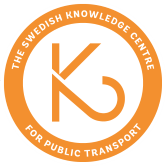The purpose of this paper is to develop a model for welfare evaluation of fare and frequency policies for bus services in smaller or medium-sized cities handling both congestion and crowding in public transport. The model with data for the city of Uppsala. Two scenarios with marginal increases in frequencies and fares are evaluated. Then four main optimal policies are evaluated: fares with unchanged base line frequencies, frequencies with unchanged base line fares, simultaneous optimization of fares and frequencies and finally a scenario called the Pareto scenario where frequencies and fares are optimized subject to the condition that no consumer group (defined by zone, time period, origin-destination pair) should be worse of in terms of generalized cost of trip. The results indicate that there are large, seemingly robust welfare gains from reducing public transport supply in Uppsala, especially in the outer zone of the city where reductions compared to the current situation are rather drastic. In comparison, welfare gains form adjusting fares are smaller. As there are large distributional effects in the welfare optimum, introduction of such a policy it is likely to be controversial. However, in an additionally examined scenario, almost all of the potential social welfare gains from the welfare optimal scenario is achieved while no consumer in any zone or time period is worse off compared to present policy. In this scenario, the total number of public transport passengers are increased and emissions are reduced compared to the current situation.
